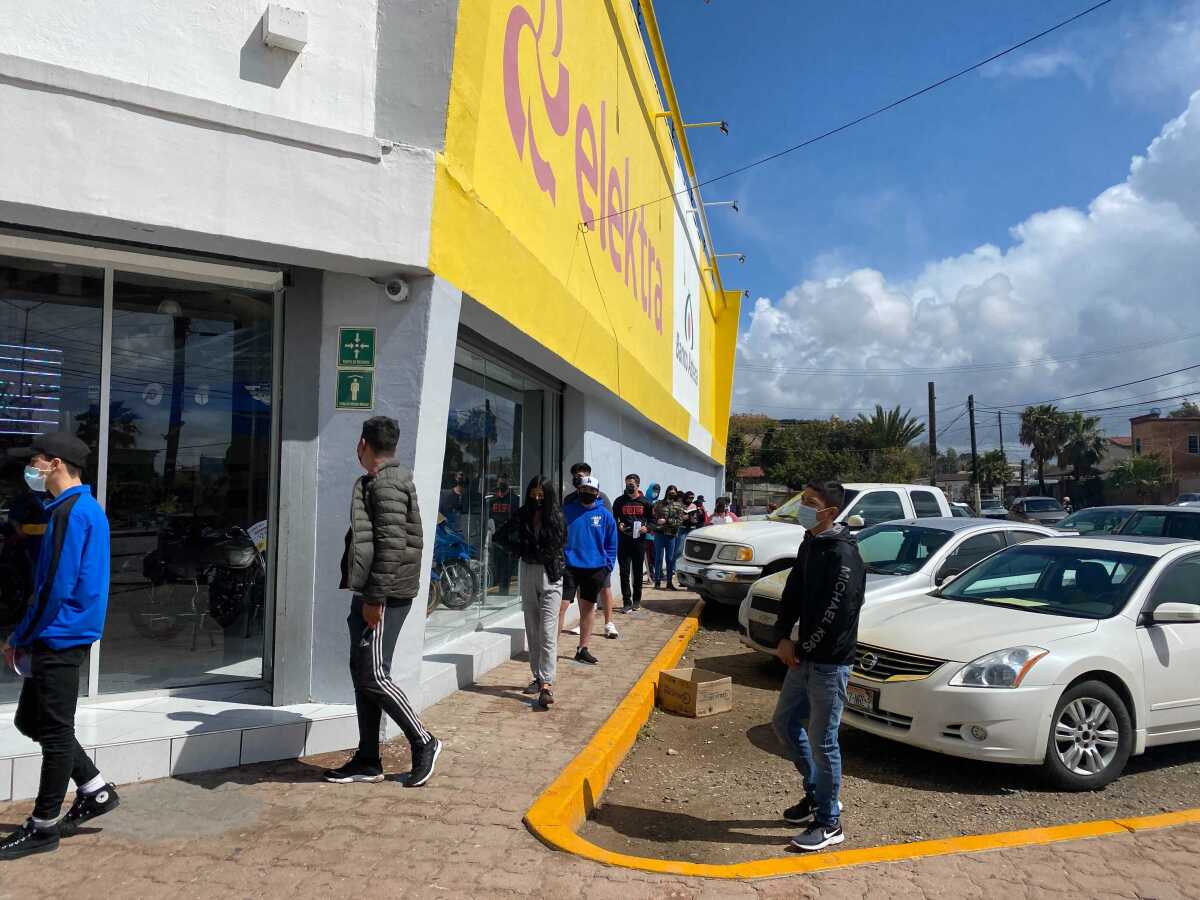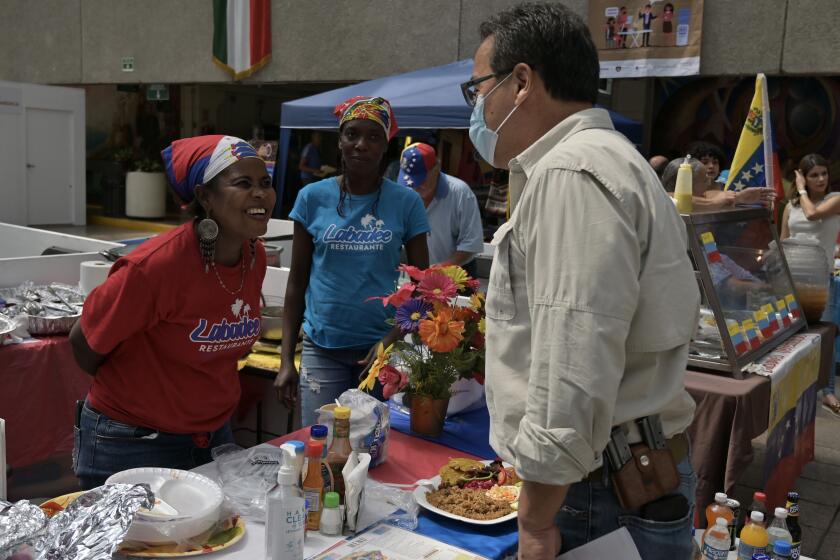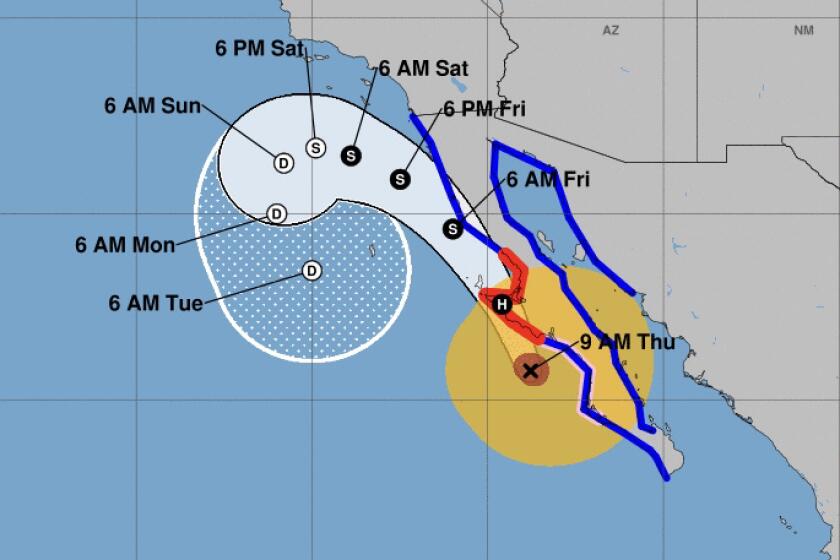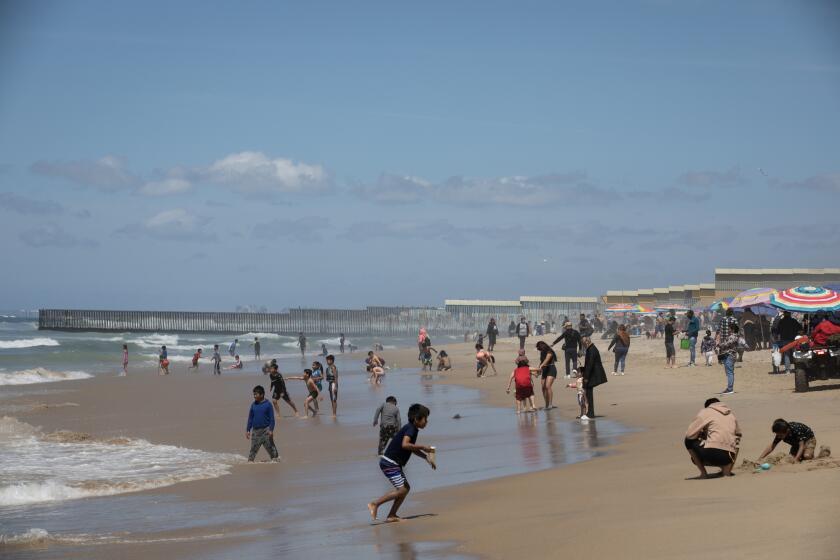Mexican migrants in the U.S. sent more money home in 2020 to keep families afloat

Remittances have increased sharply since the start of the pandemic, with help from U.S. relief payments
When the coronavirus descended on the world a year ago, many assumed that as economies seized up the casualties would include the many thousands of families in Mexico and Central America that depend on regular payments from relatives in the United States.
But while those poorer nations saw their economies devastated by the virus, there was a silver lining: remittance payments actually soared. Total remittances to Mexico rose 14% in 2020, to $41 billion from $36 billion in 2019, according to Bank of México — the vast majority of it coming from the U.S. That amounted to 4% of Mexico’s gross national product.
In the border region, the increase was even more dramatic. Tijuana received more money in family remittances than any other municipality — about $626 million, a 30.1 percent increase from 2019.
More than 1.5 million households in Mexico receive remittances from abroad. The money serves as a lifeline for towns like Puerto Nuevo, a dusty fishing village perched on top of sun-soaked cliffs overlooking the Pacific Ocean about 90 minutes south of San Diego.
Almost all of Puerto Nuevo’s hundreds of residents depend on American visitors for their livelihood. That includes 29-year-old Celine Verdugo, who supports her two young children with the tips and wages she earns waitressing.
“The tourism just tanked because of COVID. We are just praying and hoping they (the Americans) come back in the summer,” said Verdugo on Wednesday. She was on her way to the Elektra store in Rosarito to pick up money sent by her husband, who works seasonally in the United States loading and unloading ship containers.
Verdugo said that even though Baja California officials recently allowed bars and nightclubs to reopen at 50 percent capacity, American tourists remain cautious and are keeping mostly to Tijuana’s main nightclub strip and not yet venturing further south into Puerto Nuevo.
“If my husband was not sending this money home to us right now, I don’t know what we would do or how we would survive,” she said.
One reason the money kept flowing is that Mexican nationals in the U.S. kept working in what are considered essential — and risky — jobs busing tables, picking crops and keeping factory lines and supply chains moving. And those who received stimulus checks sent at least some of that money to family at home, economists said.
“In the context of the pandemic, our countrymen know that there is a paralysis of the economy (in Mexico) and that their relatives are struggling to obtain income,” said Domingo Ramos Medina, a Tijuana economist and treasurer of the Federación de Colegios de Economistas de la República Mexicana (FCERM).
Medina said Mexican residents cannot depend on any bailouts, government spending programs or social aid to ease the pain. That’s especially true because more than half of the economy is in the informal sector — people selling trinkets to tourists, for example. Workers in the informal sector do not receive any unemployment insurance or other benefits.
“Those abroad know their relatives need financial support now more than ever, for this reason they intensified (what they send home.),” he said.
When Mexican President Andrés Manuel López Obrador came to Tijuana in February, he praised Mexican nationals living in the U.S. as “heroes” for their financial support.
“This support, this help (remittances), took us out of the hole because that money reaches all the communities in Mexico and the poorest areas,” said López Obrador at the inauguration of a National Guard barracks in Tijuana. “This is what allowed us to resist the pandemic. The economy fell but we did not have a consumer crisis. People did not stop having the basics.”
Get Essential San Diego, weekday mornings
Get top headlines from the Union-Tribune in your inbox weekday mornings, including top news, local, sports, business, entertainment and opinion.
You may occasionally receive promotional content from the San Diego Union-Tribune.











